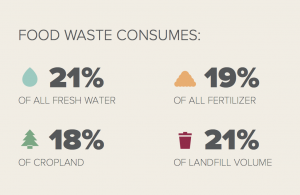I know I keep saying this, but I am about to take some massive action. IT IS TIME! So stay tuned for that (or be forewarned, whichever feels appropriate). (And check out the Happy Atmosphere Challenge if you are new to the blog!)
I keep wanting to write a post about switching to clean(er) electricity but it requires some additional research so I keep putting it off instead of just sharing what I’ve done so far.
If you are concerned about climate change, one action you can take that is not super expensive and doesn’t take much time is to check out Arcadia Power. My electricity bill now comes from Arcadia Power and I have chosen to pay a few extra dollars each month so that my energy use supports a switch to clean energy.
This is a big topic and there is a lot to write/understand but there is not an easy way, in Virginia, to use only clean energy unless you install your own PV system. Arcadia pays for Clean Energy Certificates as a sort of offset of your energy use so that they are supporting the generation of clean energy SOMEWHERE to offset my dirty energy in Virginia.
The other option with Arcadia, that I am excited about, is you can buy a “share” (of sorts) in a clean energy (solar) project where they have installed solar panels on the roof of a building in New Jersey. I pay for a 10-year share of this project and then get a deduction on my energy bill each month equal to the amount of solar energy generated by the project (and my up-front funding supports the creation of new clean energy, builds demand, helps drive innovation in and incrementally decreases the cost of solar).
Another company to check out if you live in Delaware, the District of Columbia, Illinois, Maryland, Massachusetts, New Jersey, New York, Ohio, or Pennsylvania is Clean Choice Energy. It looks like, rather than providing offset certificates, you can actually source your electricity from clean energy facilities directly.
Supporting a shift to clean energy in this country and using market forces to move our country in this direction are KEYS to more carbon on earth, less in the air. I do not suggest that market forces are more important than policy, but it is something you can do TODAY. Call your senators, be upset, march, etc. AND SHIFT YOUR HOME’S ENERGY TO CLEAN SOURCES WHERE POSSIBLE.
If you live outside of Virginia, there are resources you can look at to see what is available in your area in terms of actually having your power supplied by renewable sources instead of using certificates (I will provide some links to resources in the future). Many of my readers live in redder states which may have fewer options in terms of clean energy so Arcadia may be a good solution for you.
Pros of switching to Arcadia today:
- You can unswitch at any time. There is no contract, obligation, etc.
- Your bill can remain the same. Unless you choose to upgrade to 100% renewable (which is only a few dollars more each month, depending on how much electricity you use), your bill will not increase. You will mostly be sending a market signal that you support renewable/clean options. This is valuable.
- You can choose to support installation of new clean energy projects like the solar project I have joined. Cost starts at $100 which gets you a monthly deduction for 10 years, no matter where you might move.
I would love to get comments from any readers who have switched to clean energy to know about your experience and what is available in your area! I will compile any suggestions and add as resources under the Happy Atmosphere Challenge.
Just as a reminder, if you are reading this and don’t subscribe to the blog, and would like to have future posts (on a daily, weekly, or monthly basis) sent straight to your inbox, you can subscribe here!
Thanks for reading!!

